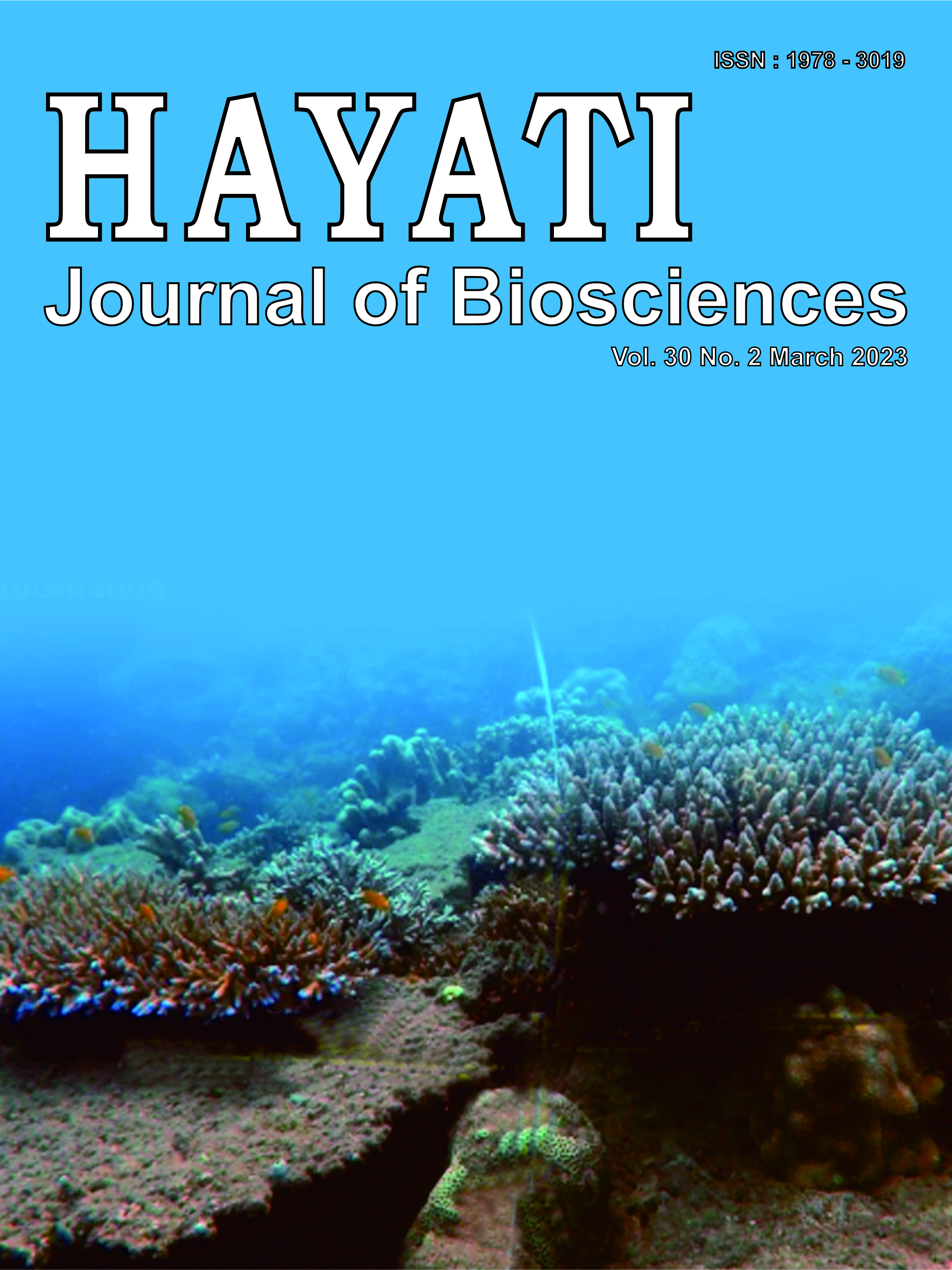A Study of Chemical Constituents in Platinum Fast-Grown Teak Wood (Tectona grandis) with Age Differences Using Py-GCMS Coupled with Interdependence Multivariate Analysis
Abstract
Pyrolysis gas chromatography-mass spectrometry (Py-GCMS) is a simple, rapid, and reliable analytical technique to assay lignocellulose biomass. This study aims to analyze the chemical content of various ages of platinum fast-grown teak wood using PyGCMS coupled with interdependence multivariate analysis. Fifty-eight peaks were shown in the pyrogram originating from carbohydrates, lignin, and extractive derivatives. Along with age, platinum fast-grown teak wood showed higher carbohydrate derivatives in heartwood than sapwood. Compared to teak wood grown in conventional (between 36.72-45.69%), platinum fast-grown teak wood has a higher content of carbohydrates (42.82-48.04%). A substantial amount of G-unit lignin was detected in the sapwood, while the S-unit lignin dominated the heartwood. The extractive content of 10-years-old teak wood heartwood was 4.82%, higher than 10- and 20-years-old heartwood from conventional wood (2.23% and 8.88%, respectively). Multivariate analysis of the chemical compound showed that Py-GCMS could be utilized to classify platinum fast-grown and conventional teak wood. 2-methyl anthraquinone (MAQ) content of 10-year-old fast-grown teak wood was 2.5 times higher than 20-year-old conventional teak wood. Based on the study, platinum fast-grown teak wood is promising as alternative wood material to fulfill the market demand for conventional teak wood.
Downloads
Copyright (c) 2023 Maya Ismayati, Dwi Ajias Pramasari, Wahyu Dwianto, Danang Sudarwoko Adi, Nyndia Tri Muliawati, Ratih Damayanti, Narita Ayu Putri Pramesti, Syahrul Ramadhan, Ari Hardianto, Nadia Nuraniya Kamaluddin

This work is licensed under a Creative Commons Attribution-NonCommercial 4.0 International License.
HAYATI J Biosci is an open access journal and the article's license is CC-BY-NC. This license lets others distribute, remix, tweak, and build upon author's work, as long as they credit the original creation. Authors retain copyright and grant the journal/publisher non exclusive publishing rights with the work simultaneously licensed under a https://creativecommons.org/

























.png) IPB University
IPB University Department of Biology
Department of Biology The Indonesian Biological Society
The Indonesian Biological Society 

